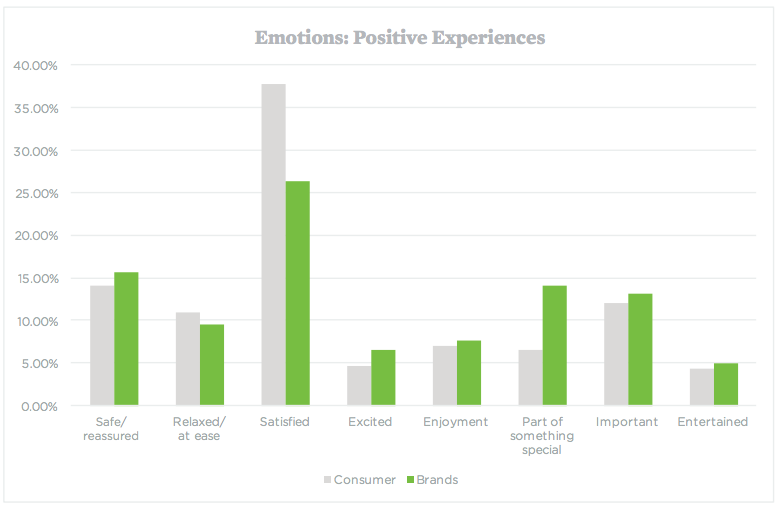
Consumers don’t want to feel excited about your company. They want to feel satisfied, according to a recent InMoment study. And satisfied customers are loyal customers.
So, what does it take to satisfy a customer? Quite simply, positive brand experience harks back to one thing: delivering on your promise.
Read on to learn how consumers feel about food companies today and several ways you can increase customer satisfaction with your business.
How consumers feel about food companies
Transparency and communication impact how people feel about companies throughout the food industry.
According to the 2016 Temkin Experience Ratings, grocery stores and quick service restaurants ranks pretty well. Highest on the list were grocery store Publix and QSR Chick-fil-A. Kroger, Aldi, and Subway sat a bit lower. But all of these companies were ranked higher than businesses in industries like telecom and healthcare.
But not everyone feels that great about the food industry, and sentiment is shifting as to what consumers want.
For example, in a study on consumer trust and food company transparency, Trace One found that only 11% of consumers fully trust that food is safe and only 8% trust that it’s of high quality. More than a third believe the food industry doesn’t act quickly enough or provide timely information during recalls and other health scares.
Additionally, 91% of consumers reported that knowing where their food comes from is important, but 62% feel they don’t know enough about what’s in their food.
Another study found that the bigger a food company is, the less likely people are to trust it.
So, what can the food industry do to quell these doubts and increase positive feelings? Here are some suggestions.
Execute brand promises consistently
Consumers will be brand loyal if they’re brand satisfied. The InMoment study talked to 20,000 consumers and 10,000 brands around the world and found that emotions are the primary driver of a positive customer experience. And, across the board, almost 40% of respondents associated satisfaction with loyalty.

Satisfying customers isn’t that hard, either. It’s mainly a matter of brands fulfilling their promises. When they don’t, negative emotions run rampant. The authors write: “Because consumer expectations are, in fact, quite reasonable, when brands fail to deliver, consumers feel betrayed.”
Communicate efficiently
In the Trace One study, consumers reported that efficient communication and documentation, especially during recalls and other health scares, reduces doubt. This complements the InMoment study, which found that, after feeling satisfied, the second most important aspect of a positive brand experience is feeling safe and reassured.
But don’t try to entertain or excite customers if you aren’t first satisfying them. These two emotions ranked lowest on the scale of positive experience drivers. Also, brands overvalue the importance of emotions like feeling important and feeling like a part of something special for fostering loyalty. To close this gap, companies must align their promises with customer expectations, says the study.
Adopt IoT technologies
Companies across the food industry already use new IoT technologies to track food from farm to table. Brands that use smart sensors and QR codes, like the Barilla Safety for Food (S4F) initiative, can eliminate consumer doubts and ultimately deliver on promises that increase customer satisfaction.
Personalize, personalize, personalize
Support
Offering personalized support is another way to score points with customers. The InMoment study found that personalized support was more important than advertising or a customized purchase process.
Overall, consumers expect you to know who they are. So consider revamping your support system to recognize customers based on their name, status, or loyalty. And while many jobs are being filled by robots, customers don’t want to feel like they’re talking to one when they contact your company — especially if there’s an incident like a food recall. See above for the importance of communication about recalls and other health scares.
Tone down negative emotions
The other side of accentuating the positive is eliminating the negative. Disappointed, frustrated, and disrespected — these are three emotions you definitely want to avoid.
Again, reflect on your company’s promises and ensure those promises are fulfilled consistently. Customers feel negatively about a brand if there’s a lack of transparency or a company is too slow to respond to a customer doubt.

Today’s consumers don’t ask that much. They simply want brands to deliver on their promises. As the Trace One study found, food companies have a lot of room for improvement in this regard. Communicating effectively, personalizing the experience, and increasing transparency will all help you create a satisfied customer base that’s with you every step — and every purchase — of the way.






